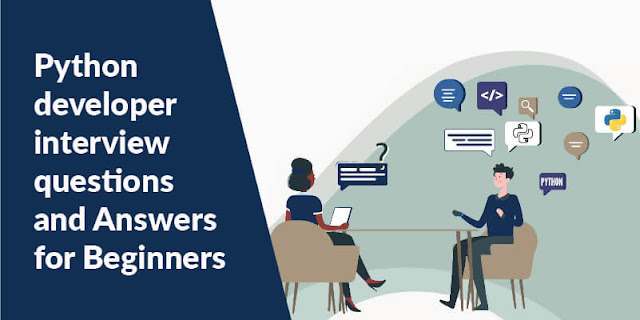Python is a high-level, general-purpose programming language. Python is a programming language that may be used to create desktop GUI apps, websites, and online applications. Python, as a high-level programming language, also allows you to concentrate on the application’s essential functionality while it handles routine programming duties. The basic grammar limitations of the programming language make it considerably easier to maintain the code base intelligible and the application manageable.
More questions Irrespective of the source you pick a list of best programming languages to learn in 2022 from, one name that will always find its place there is Python.
So, the answer is yes, if you are asking whether a lucrative career is possible by dedicating yourself to the interpreted, high-level, general-purpose programming language i.e. learning Python.
Top Python Interview Questions and Answers
These questions cover all the basic applications of Python and will showcase your expertise in the subject. The python interview questions are divided into groups such as basic, intermediate, and advanced questions. To cover some basic concepts and master your interview questions and answers, you can enroll in a python course today where you will get a free online certificate.
Q.1. What are the key features of Python?
If it makes for an introductory language to programming, Python must mean something. These are its qualities:
Interpreted
Dynamically-typed
Object-oriented
Concise and simple
Free
Has a large community
Q.2. Differentiate between lists and tuples.
The major difference is that a list is mutable, but a tuple is immutable. Examples:
>>> mylist=[1,3,3]
>>> mylist[1]=2
>>> mytuple=(1,3,3)
>>> mytuple[1]=2
Traceback (most recent call last):
File “<pyshell#97>”, line 1, in <module>
mytuple[1]=2
TypeError: ‘tuple’ object does not support item assignment
Q.3. Explain the ternary operator in Python.
Unlike C++, we don’t have ?: in Python, but we have this:
[on true] if [expression] else [on false]
If the expression is True, the statement under [on true] is executed. Else, that under [on false] is executed.
Below is how you would use it:
>>> a,b=2,3
>>> min=a if a<b else b
>>> min
>>> print("Hi") if a<b else print("Bye")
Hi
Q.4. What are negative indices?
Let’s take a list for this.
>>> mylist=[0,1,2,3,4,5,6,7,8]
A negative index, unlike a positive one, begins searching from the right.
>>> mylist[-3]
This also helps with slicing from the back:
>>> mylist[-6:-1]
[3, 4, 5, 6, 7]
Q.5. Is Python case-sensitive?
A language is case-sensitive if it distinguishes between identifiers like myname and Myname. In other words, it cares about the case- lowercase or uppercase. Let’s try this with Python.
>>> myname='Ayushi'
>>> Myname
Traceback (most recent call last):
File “<pyshell#3>”, line 1, in <module>
Myname
NameError: name ‘Myname’ is not defined
As you can see, this raised a NameError. This means that Python is indeed case-sensitive.
Q.6. How long can an identifier be in Python?
According to the official Python documentation, an identifier can be of any length. However, PEP 8 suggests that you should limit all lines to a maximum of 79 characters. Also, PEP 20 says ‘readability counts’. So, a very long identifier will violate PEP-8 and PEP-20.
Apart from that, there are certain rules we must follow to name one:
1)It can only begin with an underscore or a character from A-Z or a-z.
2)The rest of it can contain anything from the following: A-Z/a-z/_/0-9.
3)Python is case-sensitive, as we discussed in the previous question.
Q.7. How would you declare a comment in Python?
Unlike languages like C++, Python does not have multiline comments. All it has is octothorpe (#). Anything following a hash is considered a comment, and the interpreter ignores it.
>>> #line 1 of comment
>>> #line 2 of comment
In fact, you can place a comment anywhere in your code. You can use it to explain your code.
Q.8. How will you check if all characters in a string are alphanumeric?
For this, we use the method isalnum().
Q.9. And how do you reverse a list?
Using the reverse() method.
>>> a.reverse()
>>> a
[4, 3, 2, 1]
You can also do it via slicing from right to left:
>>> a[::-1]
>>> a
[1, 2, 3, 4]
This gives us the original list because we already reversed it once. However, this does not modify the original list to reverse it.
Q.10. How does a function return values?
A function uses the ‘return’ keyword to return a value. Take a look:
>>> def add(a,b):
return a+b
For more interesting python interview questions and answers for freshers to prepare better for the right job for your career .



.png)


.png)
0 Comments